Angela Eaton, Environmental Urbanist
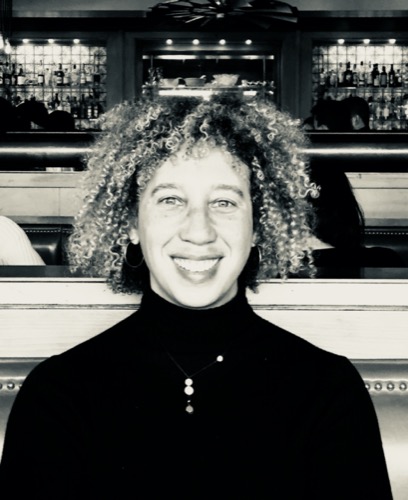
Cool Tools Show 239: Angela Eaton
Our guest this week is Angela Eaton. Angela is a Black Midwest-born environmental urbanist living and working in California on Ohlone land. Professionally, she supports communities in their efforts to monitor, understand, and publish open air quality and radiation data as a director for Safecast.
Subscribe to the Cool Tools Show on iTunes | RSS | Transcript | See all the Cool Tools Show posts on a single page
Show notes:
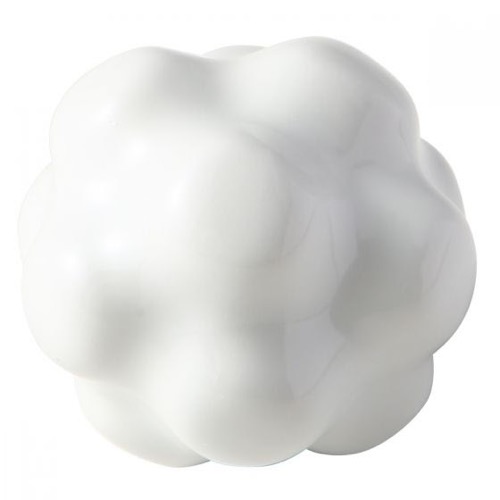
Point Pressing Ball ($8)
This is a little thing that I picked up on a trip to Tokyo. A friend of mine hauled me into a Muji. They’re all over the world, but they’re not everywhere. It’s a porcelain ball that looks like if you put a golf ball through some sort of dimensional torque and got it to expand and contract. And so, it has little knobs all over it. Then what I like to do is just rub it around my hands and rub my feet over it, especially if I’ve been walking a lot, and especially if I’m out and I don’t have my regular massage tools. I’ve used a whole bunch of other types of hand and foot massage things. What I like about this is that it’s very social in that I can use it and nobody can hear it. So it doesn’t make any noise and I’m not likely to drop it too much, whereas some of the other massage balls for hands and feet, I feel like I’m either dropping them or they’re clacking around, or they’re making some sort of noise. This is super portable. I can throw it in my Dopp kit and then I’m off.
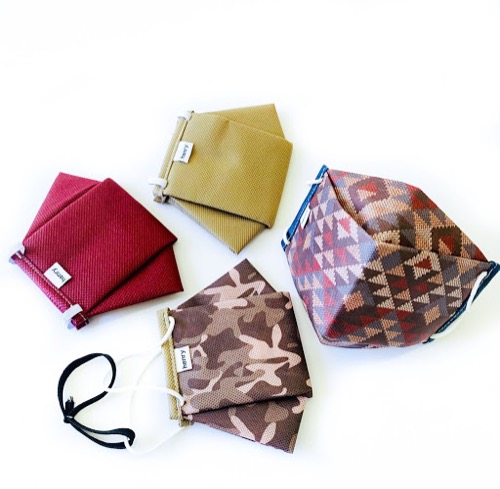
Henry Mask (Monthly subscription: $40, 4pk)
I like this because it feels like origami for your face. It’s not paper, it’s not cloth. It’s a mask. There’s three folds. It has a part that sticks out. A friend of mine said kind of beak like, but it has a part that you can pull up over your nose and pull down under your chin. You can either use it over the ears or you can use it behind your head. I feel like it fits a lot of people’s faces. I’ve so far never seen anybody not look good in this. But what I really like about it is that it’s fun. It’s got great design on it. It’s got bright colors, and even the muted ones still look like they’re interesting to wear, and fun, and well-designed, and I feel that the part that sticks out allows me to breathe better. You don’t get that blow back when you’re talking or breathing. Another thing that I really like about it is, one, masks get worn out and stinky, and I think you get bored with them and you need something to look forward to. This is something coming in the mail that is bright and colorful and makes you excited to wear it. If you’re going to be excited to wear any mask, this would be the one that I’d be excited to wear.
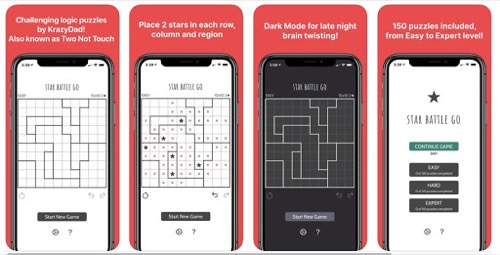
Star Battle Go Logic Puzzles
My gaming is usually around word games. Star Battle Go is not a word game. I think most people describe it as having a more Sudoku feel to it. When I read the notes on it, it said it was created in 2003 by a Dutch creator. A friend of mine saw this game somewhere and she decided to make her own. So she created the game, and the way she designed is so elegant. It just works very well. Imagine if you have a 10 by 10 square, and you have different shapes within it. And within those shapes, you can have only two stars, and you have to place the stars. You can only have two stars per column and two stars per row. You have to figure out, in this row, in this column, and in this shape, how to place your stars. And then, of course, it will fill in the places that you can’t place your stars, or you can make it harder on yourself and not give yourself those clues. There are other versions of this game but this one is simple and well-designed and the puzzles are great. It is my current fav phone strategy game and mind refresher and my only non word-based game.
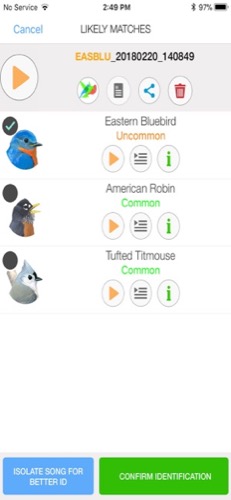
Song Sleuth: Auto Bird Song ID
I’ll give you the background: In these last three months, there’s not been a lot of noise. And I think there’s been more birds. Birds have been chattering away, or I’ve noticed them more. So it’s pretty exciting to walk outside and I’m like, “What is that? It’s like the cycling noise or a rat-a-tat-tat, or what’s going on? A friend of mine turned me on to Song Sleuth, which is if you want to call it Shazam for birds. You have to record it and then you pull down the recording. There’s a way for you to manipulate the sound recording so that you’re just isolating, as much as possible, the bird sound. Then it says ID and it runs it against what it knows and gives you some possible matches. Then allows you to hear what those birds are so that you then can determine if the match is correct. This is not a tool for expert birders. There’s all sorts of complaining going on out there. But for me, I’m not an expert birder. I don’t know anything. I’m just looking at something and going, “What is that?” And it surprises me. A lot of times, what I’ve gotten are like House Finch. So it’s not that I’m getting back things that are so revelatory. Every once in a while, it’ll give me something super uncommon, and I’m like, “You’re just toying with me. I did not hear some super rare bird.” So I think that there’s room to grow with this app, but it’s just fun to play with, and hear, and observe, when I think that more wildlife is out there taking up space that humans used to be taking up.
About Safecast:
Safecast is a way for people and communities to self-publish environmental data. What that amounts to is, how do I know if my air is clean or how do I know what the radiation is around me? The reason why we publish air quality and radiation are that Safecast originally was born out of the Daiichi Fukushima nuclear meltdown. It started almost nine years ago with that event, and people at the time did not know what their radiation exposure was. They got to gather and figured out a way to build small handheld mobile radiation measurement devices and then they went and mapped their environment to find out what their exposure had been. That ended up being a wonderful worldwide project. And so, the newest monitor that we’re working with is the Airnote, which was put together by Safecast volunteers. It has this great ability to be placed anywhere because it doesn’t require WiFi, and it doesn’t require an electricity source. It has a solar cell. It automatically uploads data so that you don’t have to worry about it. You can just place it wherever works best for you. One of the things that is really important to me about that is that it makes it really accessible to more people. It will allow people who can’t afford WiFi, or don’t have maybe a space next to their home, they’ll be able to place it somewhere and do some documentation as well.
We have hired professional editors to help create our weekly podcasts and video reviews. So far, Cool Tools listeners have pledged $390 a month. Please consider supporting us on Patreon. We have great rewards for people who contribute! If you would like to make a one-time donation, you can do so using this link: https://paypal.me/cooltools.– MF
08/14/20








